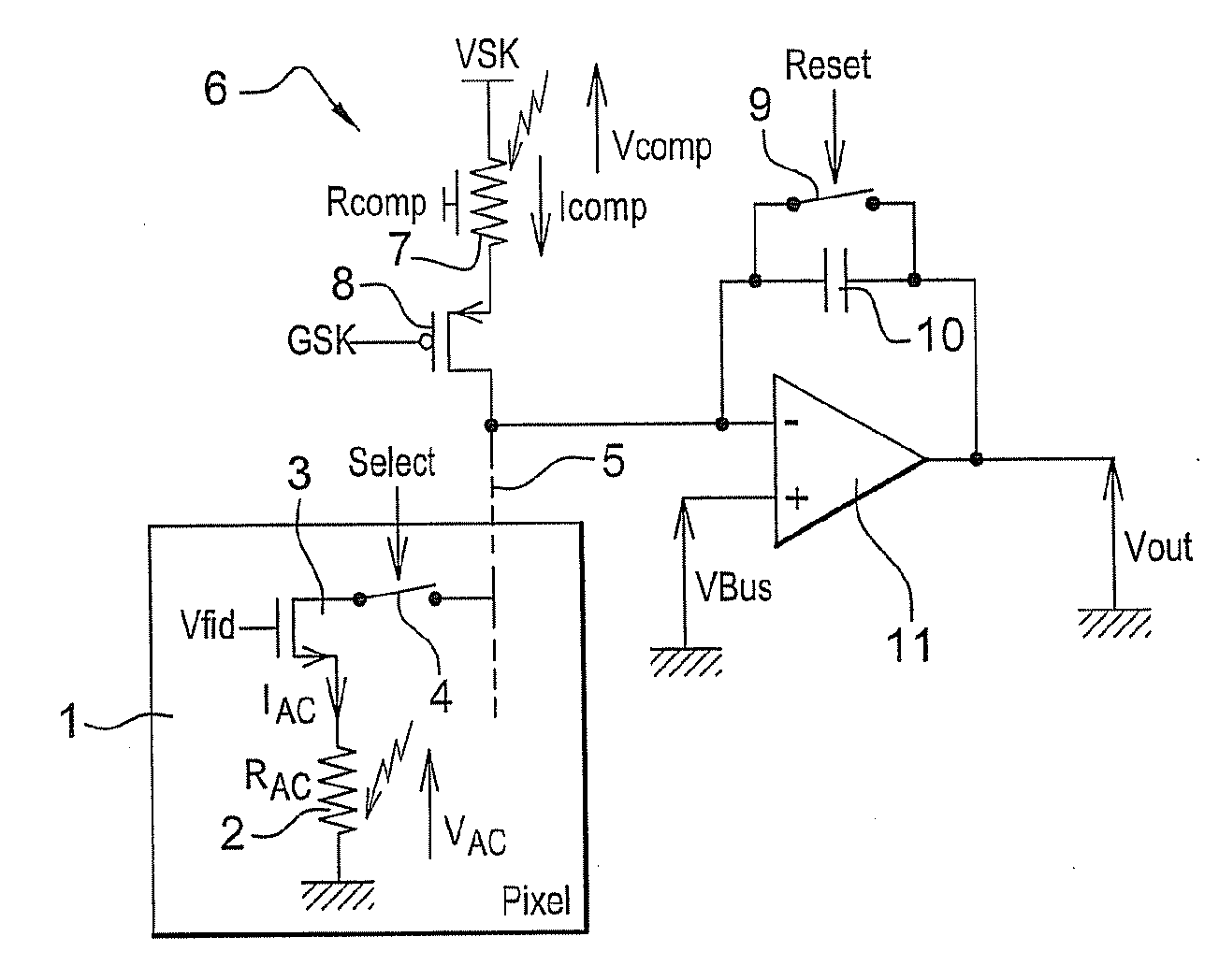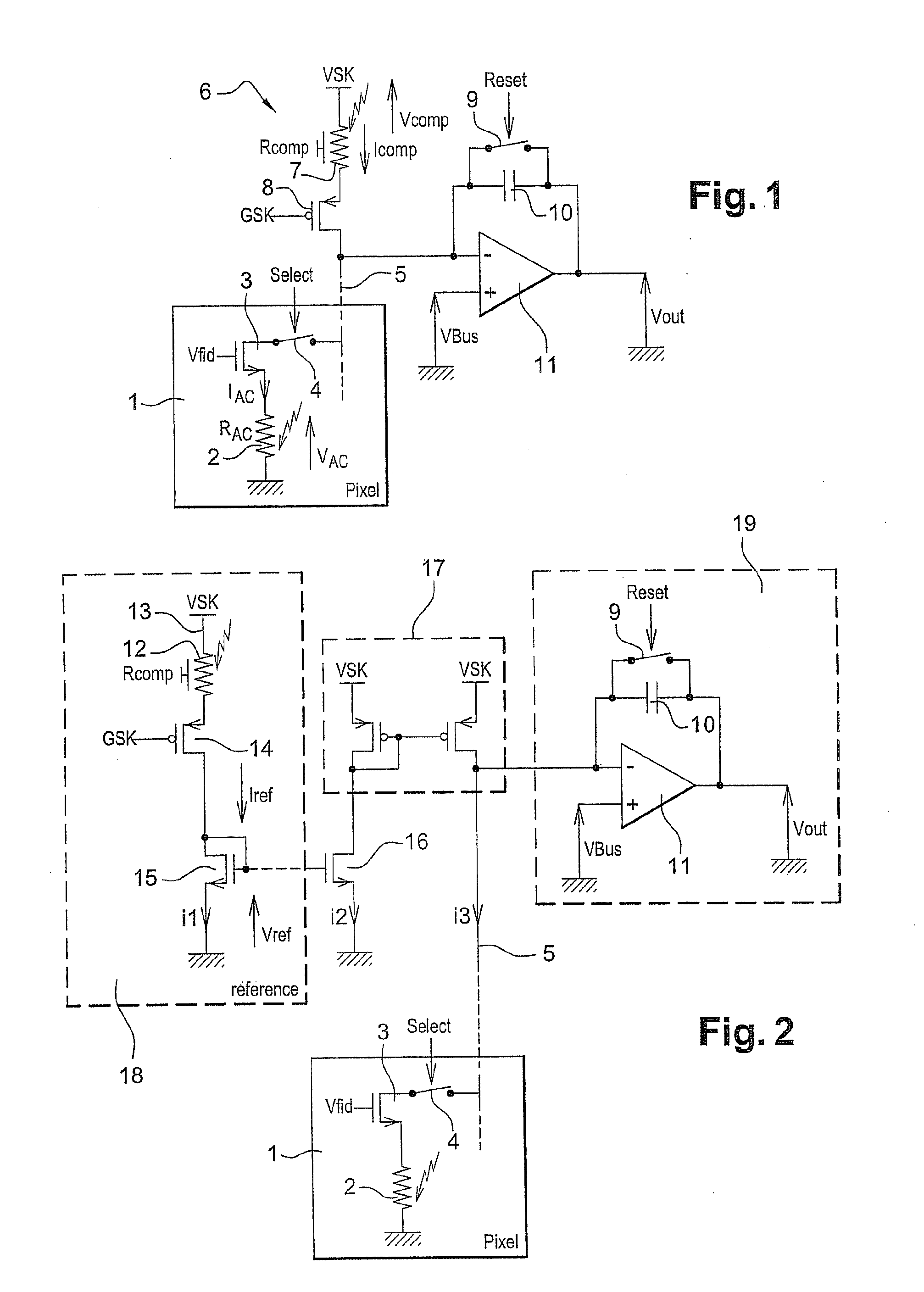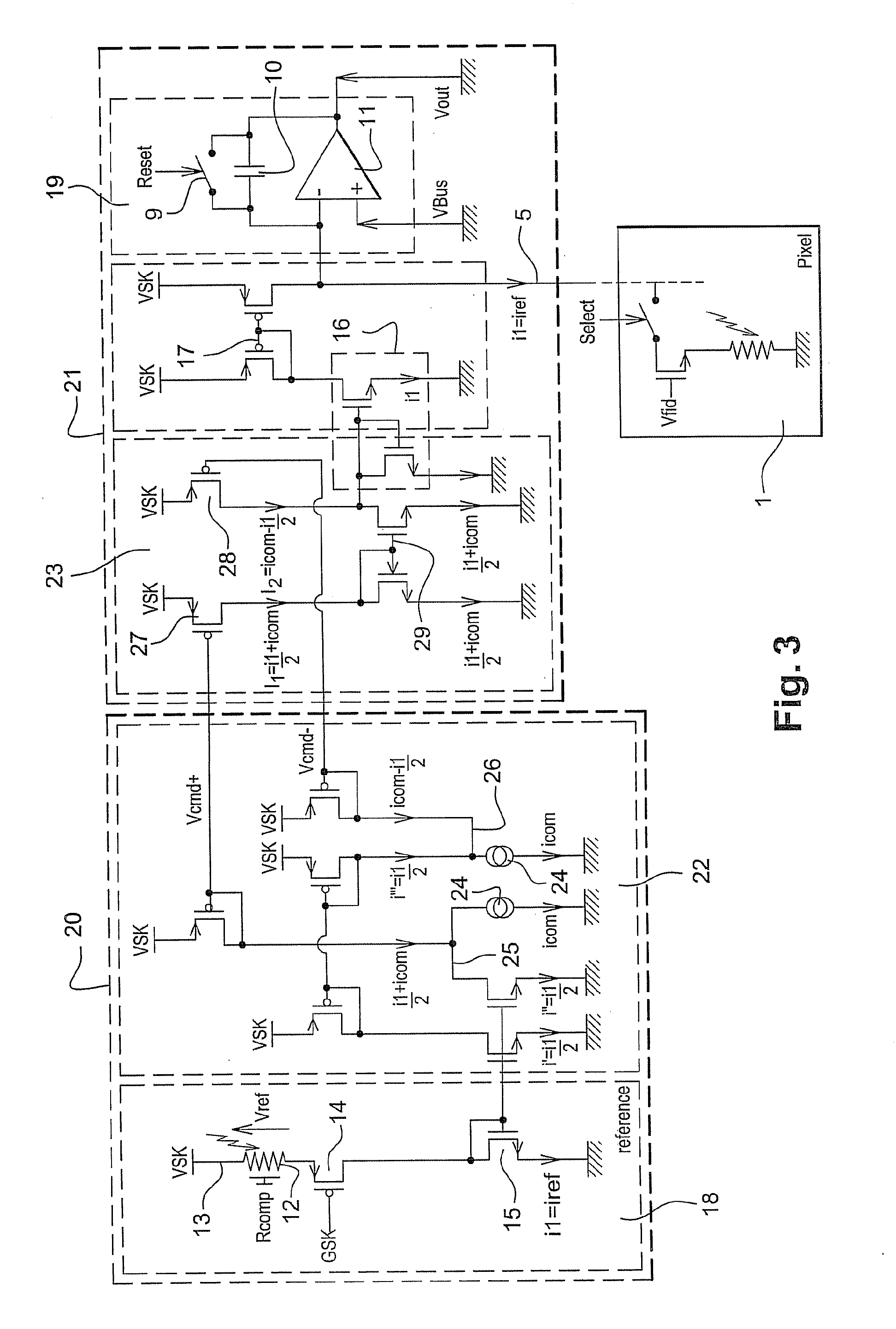Device for detecting infrared radiation with bolometric detectors
a technology of infrared radiation and detector, which is applied in the field of devices for detecting infrared radiation, can solve the problems of small relative variation in electrical resistance, adversely affecting signal quality, blind bolometers, like imaging bolometers, and certain functions of the read circuit, and affect the noise phenomena of the read circui
- Summary
- Abstract
- Description
- Claims
- Application Information
AI Technical Summary
Benefits of technology
Problems solved by technology
Method used
Image
Examples
Embodiment Construction
[0070]In the rest of this description, the same reference number is used to identify elements which are identical or of the same functional type, when applicable.
[0071]Generally speaking and as already stated, the array of bolometric detectors is formed on a silicon substrate in which the read circuit is produced. This substrate is traditionally covered, in the area of its active structures, i.e. vertically below the optically sensitive area, in a reflective metallic layer. This layer is designed, in a known manner, to form a quarter-wave cavity between the substrate and the absorbent parts of the detector.
[0072]The optically active areas are formed by “paved” suspended membranes which comprise, above the read circuit, a bolometric material. These membranes are supported by means of structures which are substantially vertical and electrically conductive. These structures, made of a metallic material, are also designed to route the excitation potentials generated by the read circuit ...
PUM
 Login to View More
Login to View More Abstract
Description
Claims
Application Information
 Login to View More
Login to View More - R&D
- Intellectual Property
- Life Sciences
- Materials
- Tech Scout
- Unparalleled Data Quality
- Higher Quality Content
- 60% Fewer Hallucinations
Browse by: Latest US Patents, China's latest patents, Technical Efficacy Thesaurus, Application Domain, Technology Topic, Popular Technical Reports.
© 2025 PatSnap. All rights reserved.Legal|Privacy policy|Modern Slavery Act Transparency Statement|Sitemap|About US| Contact US: help@patsnap.com



